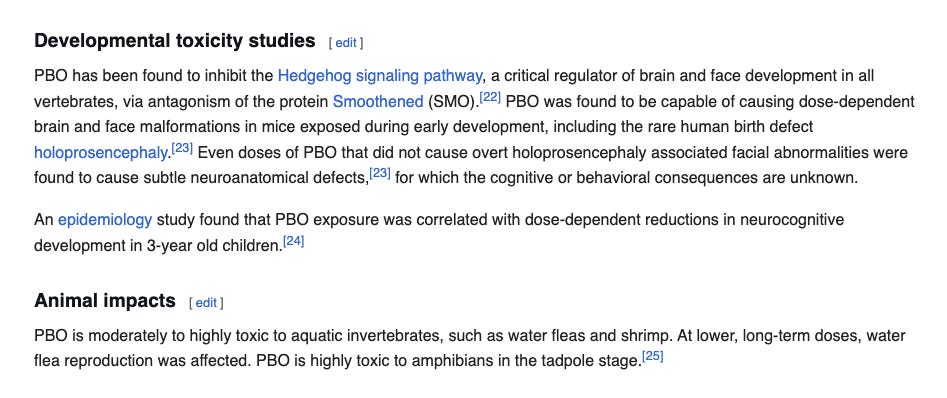A pal from Calera, Alabama reached out to me in a comment and shared what happened at “3:33am” in his neighborhood.
Folks, this happens a LOT. Here’s what I did to get to the bottom of it.
First, I looked up “Calera, Alabama mosquito abatement” and found this phone number and I called:
I called and was put through to “Public Works.”
The receptionist was sweet but clueless about what they were spraying, yet she was SURE IT WAS SAFE. Good god.
She transferred me and I left a voicemail asking for a return call. Within 10 minutes, I received a call-back from a very lovely but misinformed man who also believed the mosquito chemical was “safe” for bees, cats, animals, and people. He was very receptive to me calling him back once I did some research into the chemical.
He told me that they’re spraying Permasease UC 2020.
Active ingredients & side-effects:
Permethrin (20.6%):
Permethrin is classified as "Likely to be Carcinogenic to Humans" by ingestion by the U.S. Environmental Protection Agency (EPA). This classification is based on benign lung and liver tumors found in mice and similar, though inconclusive, evidence in rats. Permethrin can irritate the eyes, skin, and respiratory tract.
When permethrin is applied indoors near a window and exposed to daylight, after 20 days, 60% of the permethrin remains on the surface. Permethrin has a half-life of about 40 days in soil, 1-3 weeks on the surface of plants, over 20 days indoors, and 19-27 hours in the water column. In aquatic environments, permethrin can bioaccumulate in organisms, with bioconcentration factor (BCF) values indicating high potential for bioconcentration.
In terms of exposure, permethrin may cause skin irritation, tingling, burning, and itching if it comes into contact with the skin. If permethrin gets into the eyes, it can cause redness, pain, or burning. Inhalation of permethrin may cause headache, nasal and respiratory irritation, difficulty breathing, dizziness, nausea, or vomiting. Ingestion of permethrin may cause sore throat, abdominal pain, nausea, and vomiting.
Here is the NIST Fact sheet, and from Chemical Book.
Piperonyl Butoxide (20.6%)
PBO has been found to inhibit the Hedgehog signaling pathway, a critical regulator of brain and face development in all vertebrates, via antagonism of the protein Smoothened (SMO).[22] PBO was found to be capable of causing dose-dependent brain and face malformations in mice exposed during early development, including the rare human birth defect holoprosencephaly.[23] Even doses of PBO that did not cause overt holoprosencephaly associated facial abnormalities were found to cause subtle neuroanatomical defects,[23] for which the cognitive or behavioral consequences are unknown.
An epidemiology study found that PBO exposure was correlated with dose-dependent reductions in neurocognitive development in 3-year old children.[24] (wikipedia)
Animal impacts
PBO is moderately to highly toxic to aquatic invertebrates, such as water fleas and shrimp. At lower, long-term doses, water flea reproduction was affected. PBO is highly toxic to amphibians in the tadpole stage.[25]
A reminder: BE KIND when you call. It is on ALL of us to GET informed and to inform our neighbors and representatives. So many people are in the dark. This ends when you stay curious, ask questions, and share your findings.
Folks..if you want to make this stop, PUBLIC PRESSURE WORKS WONDERS.
You MUST get informed. You MUST say something. You MUST get engaged. Please…on behalf of our wildlife, our children, and our own health….STAND UP and say “NO MORE.”
Love, Kat













Share this post